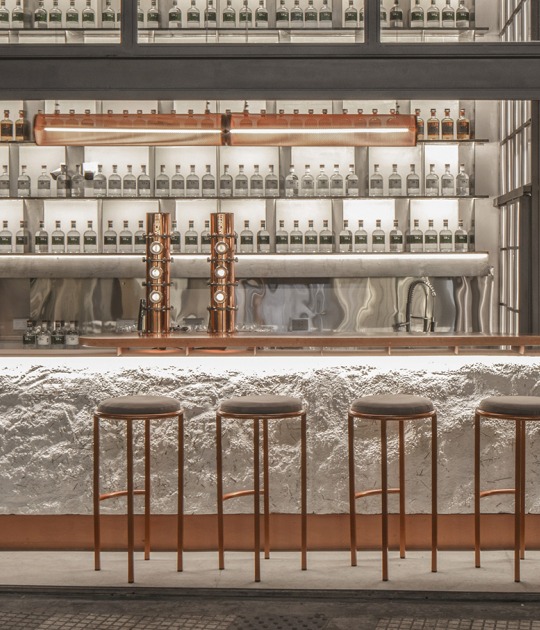In the relationship that these volumes establish with each other, Spaceworkers seek to explore the idea of rural street as a uniting and generating element of experiences. In this way, all volumes appear interconnected by a central body that precedes the entrance to each one of them as if it were a cloister.
Internally, the architects tried to make the spaces reflect a little of the monumentality and bring us inside the Romanesque buildings, not only for their scale, but also for their shapes. To this end, each volume re-interprets one of the types of coverage used in that architecture.

Interpretation Centre of Romanesque by Spaceworkers. Photograph © Fernando Guerra | FG+SG

Interpretation Centre of Romanesque by Spaceworkers. Photograph © Fernando Guerra | FG+SG

Project description by spaceworkers
Located in the district of Porto, in the Village of Lousada, the Interpretation Centre of Romanesque is located in an area that is an expansion of this village marked by a strong relationship with an urban square called Pra- ça das Pocinhas and with the Senhor dos Aflitos Church - a strong reference in the town center.
The building seeks to create a relation with the site by its implantation on the village square limit establishing an urban continuity between its volumetries and the surroudings and making it a new element of reference for this village center.
Based on the generator concepts of Romanesque architecture in Portugal, the building aims to be a transitio- nal element between the present and the distant Romanesque past. In an austere way, the volumetry propo- sed contains the principles of unity within diversity, appearing under the form of several volumes with different heights and dimensions, demonstrating the diversity that Romanesque buildings have left us.
Each volume is a distinct exhibition space. To explore the relation between them, it was created an idea of rural street as a unifying element and generator of life experiences - a cloister - a central body covered by glass that procedes the entry in each volume. This central space allows the light invasion into the space and explores the constant bright/dark relationship between it and the exhibition spaces.
Internally the exhibition spaces reflect a bit of monumentality, referring us to the interior of the Romanesque buildings, not only for its scale but also by their shapes. Therefore, each of the volumes ceilings reinterprets one of the roof types used in Romanesque architecture.
As materiality it was eligible the nowadays stone to build the building - the concrete in its apparent and auste- re natural state. Therefore, building always tries to be contemporary but without forgetting the important past, by creating an atmospheric symbiosis between this different times.

“Mr. Hulot” film
The film of the Interpretation Centre of Romanesque,in Lousada, which project was designed by Spaceworkers and directed by Building Pictures, uses as reference one of the most iconic caracters created by the film-maker Jacques Tati, Mr. Hulot. With his curious spirit, he invites the viewer to go along with him in this visit.
This project stands out for its inspiration in the Romanesque’ history in Portugal and the later reinterpretation of that influence in a contemporaneous way.
The film starts in the outside, and follows Mr. Hulot, the main caracter, a misterious individual, very focused on details, that guide us to the interior of the building. There, Mr. Hulot roams through the space, always taking a closer look on the materials he finds and feeling its textures.
After getting in, he finds himself within the central body, a wide and luminous space, that preceds the entrance to the different rooms, which are in diverse sizes and shapes. This central body, besides estabelishing a connection between them, brings back the idea of a cloister in the Medieval Age. A space full of light, monumentality and generator of life experiencies.
Mr Hulot keeps jumping from room to room, surprising the viewer, that keeps discovering them with him. In each and every one of them, he finds experiencies that appeal to different senses, like a model, a film or a interactive panel.
With the arrival of the night, Mr. Hulot comes back to the exterior to admire the building and its lighting. The film ends when Mr. Hulot finds a balcony from where he peeks between the shadows.










































































































